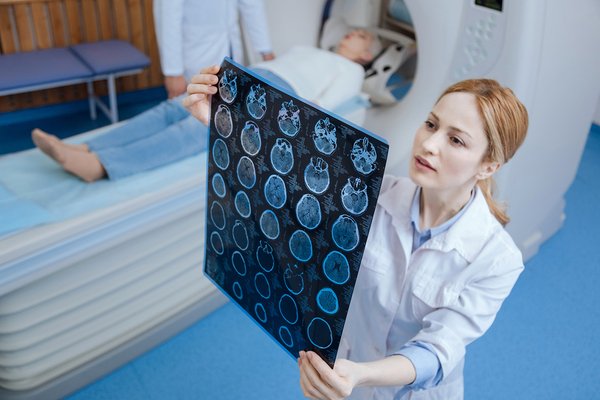There is no computer more powerful or creative than the human mind, and coordinating dozens, hundreds, or thousands of them can draw forth amazing results. One of those results is helping save the lives of lung cancer patients by drawing on the experience of thousands of oncologists to build a powerful new tumor-hunting tool.
The Problem With Lung Cancer
Lung cancer is uniquely suited to radiation therapy as a treatment. But that therapy must be carefully targeted to minimize damage to non-cancerous cells. This usually requires an oncologist to carefully examine x-rays and other imaging of the lung and delineate what’s a tumor and what’s healthy lung tissue. However, oncologists are highly-trained specialists and not every patient has easy access to them.
A Harvard team, noting the rising ability of AI in medical imaging, wondered if that could be applied to lung cancer. They decided to find out by running an open innovation initiative with $55,000 in prizes on the site Topcoder, which had a strong community of AI imaging experts. The winner would, ideally, deliver an algorithm that performed just as well in the cancer hunt as a highly trained oncologist.
Participants received nearly 80,000 images. A little over 10 percent had tumors present. Then the contestants, who competed anonymously, put their algorithms to work. To win, their algorithm had to beat an oncologist in an entirely different data set withheld from the contestants.

Open innovation puts patient care first.
The Tumor Hunt
The results were striking. Ten algorithms made it to the final round. And ultimately performed roughly as well as a professional oncologist. This won’t replace doctors. This is just one specialized task that an algorithm could quickly be taught to do, after all. What it does is free up medical personnel for more urgent patient care. And also to provide more tools to medical facilities that may struggle to get those in need to the right doctor for this task.
There are some important lessons to learn here when considering open innovation and crowd-sourcing. The challenge was specific and clearly defined. And the results could be carefully checked against specific expertise in the field. The contest drew from scientific approaches and kept its standards rigorous. Similarly, what platform was used and which audience was asked to participate for the challenge were both very carefully chosen to draw on a broad range of expertise.
Crowdsourcing and open innovation will likely drive medical imaging in the future. With endless data sets to explore and ever-improving algorithms, you may even use your phone in the near future to diagnose certain cancers. Amazingly, this is likely just the beginning of what can be accomplished as we learn more about AI. And crowdsourcing platforms become ever more able to draw together like-minded individuals to work on and overcome challenges.
Most Recent Posts
Explore the latest innovation insights and trends with our recent blog posts.













